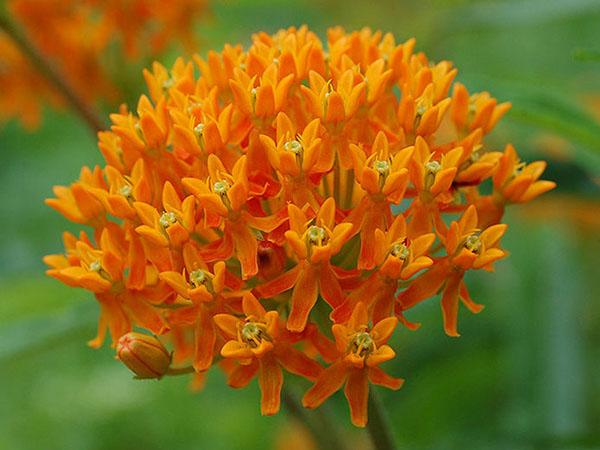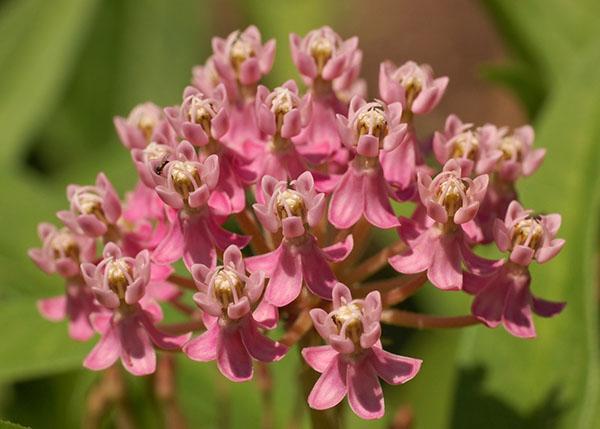You will love growing cotton wool on your site
 Growing cotton wool is very popular today among gardeners. This unusual plant belongs to the Kutrov family. The American continent is considered its homeland. The genus of vatniks combines more than two hundred different plants: from herbaceous perennials to shrubs and semi-shrubs. The choice is truly great. Deciduous or evergreen specimens can be grown. In ancient times, cotton wool was used by the Aztecs for medicinal purposes. And its Latin name comes from the name of the ancient Roman god of medicine Asclepius.
Growing cotton wool is very popular today among gardeners. This unusual plant belongs to the Kutrov family. The American continent is considered its homeland. The genus of vatniks combines more than two hundred different plants: from herbaceous perennials to shrubs and semi-shrubs. The choice is truly great. Deciduous or evergreen specimens can be grown. In ancient times, cotton wool was used by the Aztecs for medicinal purposes. And its Latin name comes from the name of the ancient Roman god of medicine Asclepius.
What is so remarkable about the plant
Today, the essence of fresh roots of cottonwood is widely used in homeopathy. But more often this beautiful plant with fragrant flowers performs a decorative function. After all, its spindle-shaped seeds are covered with white fluff, similar to cotton wool fibers. Thanks to this feature, the shrub will become an original decoration for any garden.
Types of cotton wool for growing in the country:
- Tuberose. It is also called tuberous. The stem is rigid and erect, reaching 70 cm in height. Leaves are oblong, covered with fluff. The flowering of tuberous lily continues from mid-summer and lasts until early autumn.

- Meat red. High specimen (up to 1.2 m). The bush is beautiful, prone to overgrowth over time. The flowering period takes just over a month. White flowers are rare. The predominant shades are pink or with a touch of purple. They have a subtle chocolate flavor. Inflorescences of meat-red fleece are collected in umbrellas 5 - 6 cm in diameter.

- Kurasavsky. Another name is gusset. Grown as an annual. It rarely grows above 1 meter. The flowers are quite bright, red or tangerine. Flowers of this species are very fond of butterflies. In humans, their pollen provokes skin allergies.

- Syrian. It can reach one and a half meters in height. The leaves are dense, dark. This species blooms until the first frost. The lower leaves of the Syrian cotton wool fall off, which makes the root parts of the shoot bare.

Growing cotton wool: planting rules
 Before planting cotton wool in open ground, you must select a site and prepare it. It is better if the place is sunny with slightly acidic loams. Wet, heavy soils are not suitable. The earth must be dug up and then leveled. Next, you need to make grooves and plant seeds in them about 3 cm deep. After that, water the ground well. In order for the bushes to subsequently be fluffy and beautiful, approximately 2 m of free space must be left between the plants.
Before planting cotton wool in open ground, you must select a site and prepare it. It is better if the place is sunny with slightly acidic loams. Wet, heavy soils are not suitable. The earth must be dug up and then leveled. Next, you need to make grooves and plant seeds in them about 3 cm deep. After that, water the ground well. In order for the bushes to subsequently be fluffy and beautiful, approximately 2 m of free space must be left between the plants.
The flower is prone to aggressive and rapid growth. This must be taken into account when placing the cotton wool in landscape design. Some species throw out shoots a meter forward. Limiters or tubs dug into the ground will help to deal with this feature. In the bottom, you need to make holes in advance for drainage. In one place, the bush can be up to 10 years without problems. After that, a transplant will be required. This will help stimulate growth.
Further care
 Caring for the fleece is simple. To make him feel good and pleased with his appearance, it is enough to carry out ordinary gardening activities.
Caring for the fleece is simple. To make him feel good and pleased with his appearance, it is enough to carry out ordinary gardening activities.
Watering and feeding
The first time planted seeds and seedlings are necessary water regularly... In mature plants, the roots are strong enough to provide them with the necessary moisture.During periods of drought, the Soulmate willow should be watered frequently. This is done only after sunset.
The water should be settled and preheated in the sun.
The wadder does not need too frequent feeding. It is best to enrich the soil with fertilizers in the spring. For this use urea, rotted compost or manure, and potassium sulfate. Before flowering, you can add a little complex mineral fertilizers, and after that - Nitrofoska. If the soil itself is nutritious enough, then no additional fertilizing is required to grow the cotton wool.
Transfer
 It is held every ten years. It is best to carry it out together with the division of the bush (in spring or summer). The plant tolerates the procedure absolutely calmly. A new place is selected in advance. So that moist earth remains on the roots, the bush is watered abundantly before digging
It is held every ten years. It is best to carry it out together with the division of the bush (in spring or summer). The plant tolerates the procedure absolutely calmly. A new place is selected in advance. So that moist earth remains on the roots, the bush is watered abundantly before digging
Reproduction methods
 Vatochnik can be propagated in several ways. Each gardener chooses at his own discretion. Most often, a bush is divided for this purpose. This is due to the best engraftment and early bud formation.
Vatochnik can be propagated in several ways. Each gardener chooses at his own discretion. Most often, a bush is divided for this purpose. This is due to the best engraftment and early bud formation.
Seedlings
Seeds are planted in March-April in the soil for indoor plants. They deepen a maximum of a centimeter and a half. Make holes in a special container, then cover the bottom with good drainage, then with loamy soil. Grooves are made in it, into which the seeds are laid. The container must be sealed with foil and aired daily. The soil is moistened approximately every 2 - 3 days. Seedlings will appear in about 14 days. After that, the boxes are transferred to a bright place with an air temperature of no more than + 18 °. As soon as the sprouts get stronger, the film is completely removed. Young plants with several leaves are time to dive.
Small pots with a drainage layer of about 2 cm are suitable. The first two days are best kept in the shade. In June, the willow can be transplanted into the garden. At first, the plants are watered every day, but little by little. The first flowering will please no earlier than in a couple of years. Some specimens bloom only in the third year.
By cuttings
Held in early summer. Young shoots are cut into 15 cm pieces. The lower leaves break off, and the cutting itself takes root in the wet sand. This procedure requires some skill. The more milky juice the stalk loses, the worse it will take root. It will take about three weeks to root.
By dividing the bush
Delenki are harvested in late autumn, when the bush fades. The roots are divided into parts of 10 - 15 cm each. They should have new kidneys. This method of reproduction ensures flowering the next year.
It is better to carry out any manipulations with cotton wool with gloves, since its milky juice is poisonous and irritates the skin.
Diseases and pests
 During the cultivation of the fleece, any of its diseases are rarely observed. The main cause of damage is improper care.
During the cultivation of the fleece, any of its diseases are rarely observed. The main cause of damage is improper care.
Most often, the plant damages:
- Whitefly. It feeds on the juice of the honey plant, from which it begins to fade. It is effective to use such drugs as "Actellik", "Fufanon" and "Rovikurt".
- Spider mite. Appears in dry weather. Thin cobwebs entwine the plant, its leaves wither, and the shoots are deformed. Acaricides ("Fitoverm" or "Aktara").
- In a wet environment, the bushes are affected by mold. Therefore, containers with seedlings are usually placed in a dry place. In drought, it suffers from yellowing and leaf fall. Spraying the foliage regularly will help.
Shelter for the winter
 This is a prerequisite for further growth and flowering of vatnik. Dry fallen leaves, as well as sawdust or small bark mulch, will be a good hiding place. Before this, dry shoots should be cut (at a level of about 10 cm from the ground). They also work well as hiding places.
This is a prerequisite for further growth and flowering of vatnik. Dry fallen leaves, as well as sawdust or small bark mulch, will be a good hiding place. Before this, dry shoots should be cut (at a level of about 10 cm from the ground). They also work well as hiding places.
The cotton wool will look very original in any area. It has attractive, fragrant flowers that can liven up the garden.The plant does not require particularly complex care. For experienced gardeners, growing it is not difficult at all. Silky hairs on ripe seeds will give the cotton wool an exotic look and will pleasantly surprise those around you. It's not for nothing that it has such an unusual name.